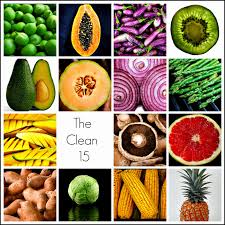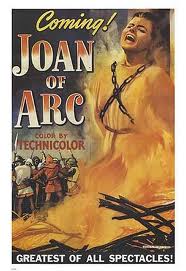What can you tell about a wine just from it’s appearance?
Before you even take a sip- pause, look at the wine in the glass. There is a whole story to be told even before you smell. Whether or not you know what the wine is, there are little hints and clues you can find just in the appearance. There are a couple of things to concentrate on- brightness, clarity, gas evidence, color & opacity, rim variation, tears/legs/viscosity and the meniscus. From all of the information you gather from each category you can make a pretty good visual analysis of what the wine might taste like and more importantly if you will like it.
There are a couple of things to concentrate on- brightness, clarity, gas evidence, color & opacity, rim variation, tears/legs/viscosity and the meniscus. From all of the information you gather from each category you can make a pretty good visual analysis of what the wine might taste like and more importantly if you will like it.
First, notice the brightness of the wine. If you look down into your wine glass can you see your reflection? If it is like a mirror it is called “brilliant.” The brightness of the wine indicates the youthfulness. So if it is brilliant the wine has probably just been released. This is important to keep in mind if you like younger wines. As wine ages it becomes less fruity and instead picks up secondary aromas like earth and sometimes funkiness.
Next look at the clarity of the wine. It is either clear, “throwing smoke,” carrying moderate sediment or lots of sediment. If a wine isn’t filtered or fined before being bottled (organic winemakers tend toward this option as well as many traditional winemakers in the “old world”/Europe) it might tend towards the cloudy side. If you hold up your wine glass to the light and you can’t see through it easily you know the wine might have a more physical texture. Meaning a little bit of sediment which is harmless but something you might not care for. Keep in mind you can always strain this out with a cheesecloth.
 If you are drinking a white wine there might be small little bubbles forming around the bottom of the glass. If you have already swirled it a million times you probably dissipated them by now. But if you are gentle these little bubbles can tell you a story. Some winemakers may choose to purposely leave residual Carbon Dioxide in the wine (a natural byproduct of fermentation, don’t worry!) because it enhances the acid profile of the wine. So for example, a California Sauvignon Blanc might be zippy in character but that extra boost of Carbon Dioxide makes the warm-climate wine zingy and refreshing.
If you are drinking a white wine there might be small little bubbles forming around the bottom of the glass. If you have already swirled it a million times you probably dissipated them by now. But if you are gentle these little bubbles can tell you a story. Some winemakers may choose to purposely leave residual Carbon Dioxide in the wine (a natural byproduct of fermentation, don’t worry!) because it enhances the acid profile of the wine. So for example, a California Sauvignon Blanc might be zippy in character but that extra boost of Carbon Dioxide makes the warm-climate wine zingy and refreshing.
What about the color of the wine? If it is red the spectrum will be violet, ruby, garnet, orange, brown and everything in between. The color may give you evidence to support a specific grape variety. For example, Pinot Noir will be lighter usually with a cherry-ruby red color whereas Cabernet Sauvignon will be darker almost inky with a purple-red color. For white wines, pale-straw, straw, deep-straw, pale gold, gold and deep-gold are all options. The color here can tell you what variety it might be as well as if there was any oak usage. If a wine is aged in oak barrels (think a buttery California Chardonnay) it will have a deeper gold color. Prefer a more refreshing and crisp wine? Then steer away from these darker colored whites. Also remember that white wines gain color as they age and red wines lose color. So a darker white might mean it’s five, ten fifteen years old. A light, dull red wine might indicate it has also seen similair age.
Next, the opacity of the wine (this is usually more applicable with reds). From Transparent to Semi-tran
sparent to opaque these levels tell you about the age and extraction levels. If a winemaker is trying to pull as much as he can from the grapes it is “highly extracted.” This can mean that it sits for a long time on the skins so it picks up a whole lot of color, flavor and power (tannins). If you tilt your glass at an angle can you see your hand below it? If it is opaque (like those jet-black tights that hide your legs) then there is a high extraction level and/or a thick-skinned grape. Stay away from these wines if you don’t care for tannins (that “drying” affect in your mouth which can be common in some Italian wines or Bordeaux) or intense flavor. These are also the types of wines that stain your teeth purple so steer clear on dates! For a lighter and more delicate style of wine look for a more transparent color with lower extraction.
Also for red wines, look at the rim variation. Looking directly down into your glass is the color true to the rim or does it lose some color as it nears the outside? Is there no loss of color or is it slight, moderate or even substantial? This tells you about how much bottle ageing the wine has seen. The more substantial the rim variation the longer time it has spent in bottle.
Finally, swirly the glass. Look at the “tears” or “legs” that form on the sides of the glass. First how quick are they to fall? Are they quick like rain sheeting on a window? Or are they slower to fall like maple syrup being poured out of a bottle? This indicates viscosity. Also concentrate on the thickness of the tears, are they thick or thin? These are both indicators of the alcohol and sugar in the wine. When a wine is “full bodied” that means it is either high in alcohol or in sugar which both contribute to a “fuller” mouthfeel. If a wine is high in alcohol or sugar it will have thicker tears and higher viscosity meaning slow moving legs. Also if the legs “stain” the sides of the glass and leave a slight red or purple dye this could indicate a more extracted or thicker skinned grape. For reds, high viscosity and staining could be something like an Australian Shiraz. For whites a higher alcohol or wine with residual sugar could be a Riesling from Alsace in France.

Lastly, look at the rim of the wine again. Does it carry a watery meniscus? If there is a slighly clear band that loops around the edges this could be a bad sign. The higher quality the wine the thinner the meniscus. If the circle of “water” around the wine is quite thick than you probably drinking a wine of lower quality.
Now you can finally smell that wine and sip away!





 Hi I’m Catherine, founder of Wine Women And Chocolate. Want to become a contributor for Wine, Women & Chocolate? Interested in sharing your unique perspective to a group of supportive, like-minded women?
Hi I’m Catherine, founder of Wine Women And Chocolate. Want to become a contributor for Wine, Women & Chocolate? Interested in sharing your unique perspective to a group of supportive, like-minded women?